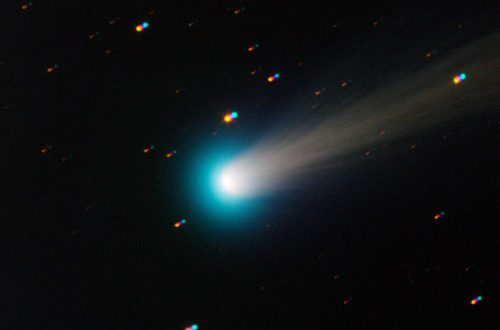Roche Lobe: A Closer Look at Binary Star Systems

Roche lobes are fascinating phenomena that occur in binary star systems. These lobes, which are defined by a star’s gravitational pull and that of its orbiting companion, play a crucial role in the evolution of these systems.
In this article, we will take a closer look at Roche lobes, their properties, and their impact on the dynamics of binary star systems.
What are Roche Lobes?
At the heart of understanding binary star systems lies the concept of Roche Lobes. These lobes are essentially the gravitational boundaries that define the regions of influence of each star in the system. They play a crucial role in determining the dynamics of the system, including the transfer of matter between the stars.
The Roche Lobe is a theoretical construct, named after French astronomer Édouard Roche, who first described it in 1848. It is essentially an imaginary surface surrounding each star in the system, beyond which any material would be more strongly attracted to the other star than to the star it originally belonged to. As such, the Roche Lobe defines the region within which material can be exchanged between the stars, and it is a key factor in determining the fate of binary systems.
Key Characteristics of Binary Star Systems and the Role of the Roche Lobe
The key characteristics of binary star systems play a crucial role in understanding this concept. Binary star systems consist of two stars orbiting around each other, each with its own Roche lobe.
The Roche lobe is the region of gravitational influence around each star that determines the balance of mass transfer between the two stars. If one star expands beyond its Roche lobe, it can transfer matter to the other star. This matter transfer can be a significant factor in the evolution of these systems.
The Roche lobe also plays a critical role in determining the stability of the system and the likelihood of a catastrophic event like a supernova. Understanding this is vital for predicting the behavior of binary star systems and their potential evolutionary pathways.
How Does a System Reach its Roche Lobe?
In binary star systems, a crucial concept to understand is the Roche lobe, which is the region of space around a star within which material is gravitationally bound to that star.
But how does a binary system reach its Roche lobe? The answer lies in the dynamics of the two stars in the system. As the stars evolve and age, their masses and radii change, and this affects their gravitational interaction. As one star expands, its Roche lobe may begin to encompass the other star, leading to the transfer of material between the two stars. Alternatively, if one star loses mass due to stellar winds or other factors, its Roche lobe may shrink, potentially leading to the disruption of the system.
Understanding the complex interplay between the stars and their Roche lobes is crucial for predicting the evolutionary pathways of binary star systems and the phenomena they produce, such as cataclysmic variable stars and X-ray binaries. Accurate modeling of these systems is essential for advancing our understanding of astrophysics and the universe as a whole.
Understanding Mass Transfer in Binary Star Systems
Understanding mass transfer in binary star systems is a crucial aspect of comprehending the complex dynamics that govern these systems. When a binary star system evolves to the point where one of the stars fills its Roche lobe, mass transfer occurs. During this process, the mass from the donor star is transferred to the companion star, altering its physical and chemical properties.
By understanding mass transfer in binary star systems, astronomers can predict the evolutionary pathways of these systems accurately. Accurate modeling of mass transfer is essential in determining the fate of these systems, which can range from stable mass transfer to explosive outcomes like novae or supernovae. Hence, understanding the intricacies of mass transfer is crucial in comprehending binary star systems’ complex dynamics.
Conclusion
Roche lobes define gravitational boundaries in binary star systems, crucial for understanding their evolution. They govern material exchange and catastrophic events such as supernovae, shaping our comprehension of these cosmic pairs. Unveiling the intricacies of mass transfer within these bounds unlocks the secrets of their cosmic evolution.
Related concepts: Roche Limit, Hill Sphere.
Would you like to receive similar articles by email?





